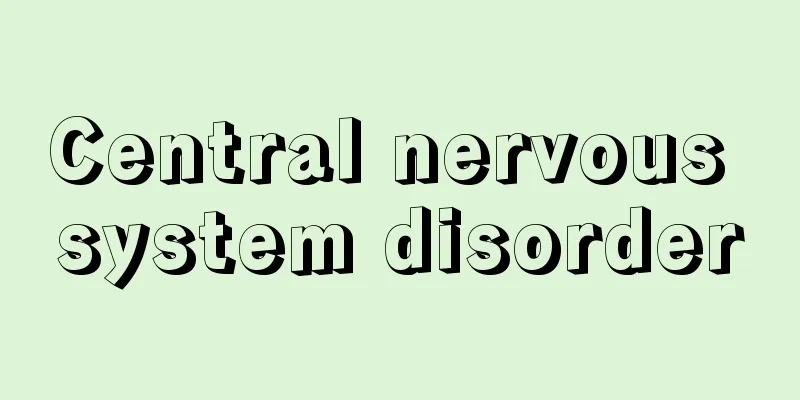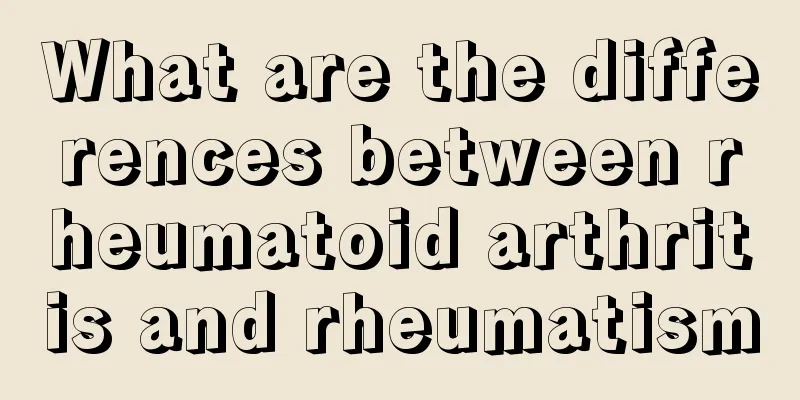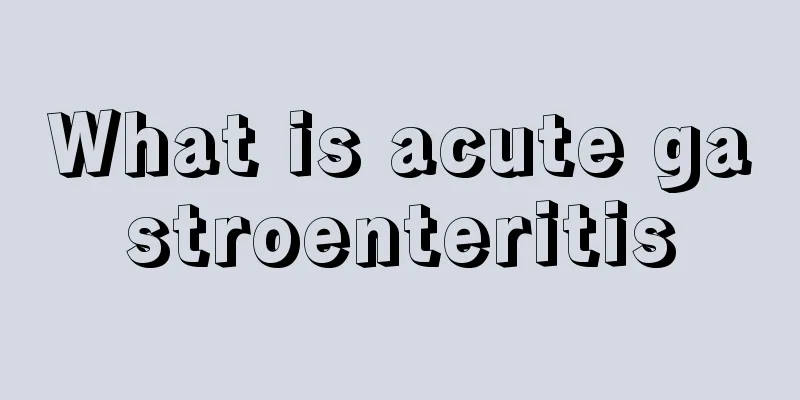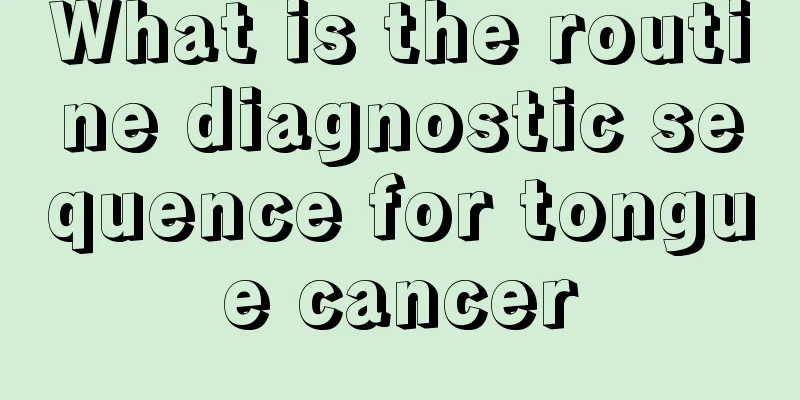Central nervous system disorder

|
The brain is the organ that issues commands to the human body and is the leader that commands the human body's systems. There are many nerve centers in the brain, which interact with each other and work together to complete the instructions issued by the brain. Our daily activities and thinking problems depend on this. Therefore, it is necessary to understand the basic knowledge of the central nervous system. When the central nervous system is disordered, it is also necessary to distinguish the causing causes. The central nervous system (CNS) is composed of the brain and spinal cord (the brain and spinal cord are the central parts of various reflex arcs) and is the main part of the human nervous system. The central nervous system receives incoming information from all over the body, integrates and processes it into coordinated motor output, or stores it in the central nervous system to become the neural basis of learning and memory. Human thinking activities are also functions of the central nervous system. Lesions edit A disease in which the central nervous system is affected by pathogenic factors (especially when no organic lesions of the nervous system can be found) and is characterized by mental activity disorders is called a mental illness. In common parlance, mental illness is often referred to as "neurosis", which is actually incorrect. However, neurosis and psychosis can often coexist. For example, sporadic encephalitis often presents with mental symptoms as the first symptom, and patients with paralysis and dementia may also experience neurological symptoms in the early stages. Some neurological diseases, such as cerebrovascular disease, epilepsy, encephalitis, meningitis, etc. are common clinically. The majority of neurological diseases are chronic and often take time to heal, which has a great impact on the patient's work and life and has a high disability rate. Neuropathy can be caused by a variety of causes. Many neuropathies have unknown causes, and many are genetic diseases. The application of technologies such as brain CT scans and magnetic resonance imaging has enabled many brain and spinal cord diseases to be diagnosed quickly and accurately. However, because nerve cells are difficult to regenerate after being damaged, many neurological diseases still have no effective treatment. Poisoning Including metal poisoning, such as lead poisoning can cause peripheral motor nerve paralysis, lead encephalopathy, mercury, arsenic, and thallium poisoning also affect the nervous system; organic poisoning, such as alcohol poisoning, barbiturate poisoning can inhibit the central nervous system, organophosphorus poisoning causes overexcitement of choleretic nerves; bacterial toxin poisoning, such as botulism poisoning can cause cranial nerve paralysis and limb weakness, diphtheria toxin can cause nerve paralysis, tetanus toxin can cause systemic skeletal muscle rigidity and spasm; animal poisons (toxins contained in coelenterates, shellfish, poisonous mosquitoes, spiders, pufferfish, etc.) can also cause neurological symptoms (muscle weakness, paralysis, convulsions, ataxia, etc.). Viral infection Including bacterial infections, such as purulent meningitis and brain abscess, caused by various purulent bacteria; viral infections, such as epidemic encephalitis caused by Japanese encephalitis virus, epidemic chest pain caused by type B coxsackie virus, poliomyelitis caused by poliovirus, kuru or slow virus infection, and subacute sclerosing panencephalitis may be caused by a mutant strain of measles virus; parasitic infections, such as cerebral malaria, cerebral paragonimiasis, and cerebral cysticercosis; fungal infections, such as Candida albicans and cryptococcal meningitis; Leptospira can also cause meningoencephalitis. The cause of some epilepsy is local scarring after infection of the meninges or cerebral cortex. Viral infections of the central nervous system are one of the leading causes of neurological infections and deaths in children worldwide. Although vaccination can prevent many serious neurological diseases caused by viruses (such as poliomyelitis, measles encephalitis, mumps meningoencephalitis and Japanese encephalitis), there are still many viral infections that cause serious damage to the structure and function of the central nervous system. Viral infections of the central nervous system include herpes simplex virus (HSV) encephalitis, enterovirus infection, congenital cytomegalovirus (CMV) infection, human immunodeficiency virus (HIV) encephalopathy, and many others. The clinical manifestations of viral infections of the central nervous system vary, with acute aseptic meningitis or encephalitis being the most common. There are still some difficulties in diagnosing the cause of the disease in most cases. Except for a few viruses, there is no specific treatment for viral infections of the central nervous system. Epidemiology Some viruses cause central nervous system infections that affect people of all ages without obvious seasonal or regional differences, such as herpes simplex virus encephalitis. But some viral diseases have obvious epidemic characteristics. For example, insect-borne virus infections are more common in areas and seasons where the corresponding insect vectors live. In China, Japanese encephalitis mainly occurs in summer and autumn (July to September), which is related to the breeding season of its main vector, Culex mosquitoes. According to foreign reports, about 70% of viral encephalitis and meningitis occur between June and November, with about 50% of cases occurring in children. Boys are slightly more likely to be infected, with a male-to-female ratio of 1.4:1. The incidence of encephalitis is highest in children under 2 years old, at 16.7/100,000, and lowest in adolescence (15 years old), at 1.0/100,000. Several types of viral infections, such as herpes virus, enterovirus (except polio virus) and respiratory virus (such as adenovirus), account for the majority of this disease, which may be related to the widespread vaccination against mumps, rubella, measles and polio viruses in the past decade. Before 1960, mumps and polio virus infections accounted for about 35% of viral infections of the central nervous system. In countries that have implemented immunization programs against these two viruses, the incidence has decreased significantly. In 1992, only four cases of polio were reported in the United States. With the strengthening of polio virus vaccination in China, wild virus infection has become relatively rare. The implementation of other public health work, such as quarantine, mosquito control, blood product monitoring and preventive immunization of animal vectors, has also led to a significant reduction in many types of neurological viral infections. Clinical classification Based on the characteristics of onset and course of disease, viral infections of the nervous system can generally be divided into four categories: acute, subacute, chronic, and embryonic encephalopathy. Classification of viruses According to biological classification standards, classification should reflect the relationship between the evolution and phylogeny of organisms. Virus classification cannot yet be carried out according to this principle. There are many classification methods in use, and the most commonly used one is the classification scheme proposed by the International Committee on Taxonomy of Viruses (ICTV). First, it is classified according to the nucleic acid type, and then further classified according to the nucleic acid molecular weight, structure, capsid symmetry, number of capsomeres, envelope, and viral morphology and size. Scientists have discovered infectious factors that are smaller than viruses, called subvims, including viroids, vimsoids, and prions. Among them, prion protein, also known as prion virus, is a kind of infectious protein resistant to nuclease, which was first reported by American scholar Prusiner in 1982. It is also called protein infector and is considered to be the causative factor of mad cow (sheep) disease, CJD and kuru in humans. Clinical symptoms Many viruses can cause nervous system infections, but different viruses may have different pathogenicity to different parts of the nervous tissue, so the clinical characteristics vary. Pathological and pathophysiological characteristics: The virus infects the human body mostly through the skin, mucous membranes, gastrointestinal tract, and respiratory tract. Some cases are acquired through medical sources such as blood transfusion and organ transplantation. After initial replication in the local area of invasion, it is released into the human blood, forming viremia, and then spreads to distant organs, especially the reticuloendothelial system, producing systemic symptoms such as fever, chills, abdominal pain, diarrhea, rash or joint pain. Most nerve-invasive viruses enter the nervous system through the blood during this period; a few, such as rabies virus, invade the central nervous system through neural pathways. The reproduction of viruses in nerve cells can cause damage to the corresponding cell functions and stimulate the body's immune response. The inflammatory response of local tissues to viral infection includes an increase in lymphocytes and macrophages, and if the course is acute, an increase in neutrophils will occur. Cytokines such as IL-1, IL-2, TNF-α and interferon are also involved in the interaction between the body and the virus and are related to the clinical manifestations and serious complications of infection. In viral meningitis, inflammatory cells spread to the pia mater or superficial cortex through the perivascular space (Virchow--Robin space), and the corresponding neuropathological changes generally resolve naturally without leaving any sequelae. However, in a minority of cases, arachnoiditis or ependymitis may occur, which may block the cerebrospinal fluid circulation pathway or cause cerebrospinal fluid absorption disorders, resulting in obstructive or communicating hydrocephalus. Typical neuropathological changes of encephalitis include leptomeningeal inflammation, perivascular leukocyte infiltration, and microglial proliferation forming microglial nodules. The location and severity of these lesions depend on the characteristics of the host and the causative agent and vary greatly from case to case and from one virus to another. In the acute phase, pathological changes may be mild or only manifest as cerebral edema. In severe or chronic encephalitis, serious pathological changes may occur, such as neuronal death, tissue necrosis, gliosis and cystic encephalomalacia. The pathological features of postinfectious encephalomyelitis are mostly edema, perivenous demyelination, and mononuclear cell inflammation. Congenital viral infections of the nervous system (also called intrauterine infections or embryonic encephalopathy) can present in a variety of forms, ranging from mild developmental neurologic defects to severe necrotizing meningoencephalitis. Neuropathological features include: ① intracranial calcification (rubella virus, CMV, HSV, VZV, HIV, lymphocytic choriomeningitis virus); ② subependymal stromal cell lysis (rubella virus, CMV); ③ lissencephaly (CMV); ④ periventricular leukomalacia (CMV, rubella virus, HSV, HIV, VZV); ⑤ hydrocephalus (HSV, CMV, VZV, Venezuelan equine encephalitis virus); ⑥ cystic encephalomalacia (HSV, CMV, VZV), etc. Genetic defects Many metabolic diseases that affect the nervous system (such as phenylpropionic aciduria, glycogen storage disease, mucopolysaccharidosis, lipid storage disease), degenerative diseases (such as leukodystrophy, Parkinson's disease, amyotrophic lateral sclerosis, hereditary optic atrophy, etc.) and myopathies (such as progressive muscular dystrophy) are genetic diseases. Most of them are autosomal recessive. Hyperkalemic and hypokalemic periodic paralysis are inherited in an autosomal dominant manner. Nutritional disorders People with kwashiorkor (a form of protein-energy malnutrition) may have neurologic symptoms such as tremors, bradykinesia, and myoclonus. Vitamin A deficiency or poisoning can cause intracranial hypertension. Vitamin B deficiency can affect the nervous system. For example, vitamin B1 deficiency (beriberi) manifests as damage to most peripheral nerves, and vitamin B12 deficiency can cause subacute combined degeneration. Alcohol-induced central nervous system disorders Wernicke's encephalopathy: an acute nutritional disorder of the nervous system caused by long-term alcohol abuse. It can also occur in other situations, such as long-term nutritional deficiencies, chronic wasting diseases, and gastrointestinal diseases. It is mainly caused by thiamine (vitamin B1) deficiency. The lesions mainly involve the thalamus, hypothalamus, mammillary bodies and the third ventricle, the gray matter around the aqueduct of the midbrain, the bottom of the fourth ventricle and the cerebellum. The pathological changes of acute Wernicke's encephalopathy are mainly extensive punctate hemorrhages in the above-mentioned areas, namely, hemorrhage, necrosis and softening in the gray matter around the fourth ventricle and aqueduct, thalamus and other areas, and loss of axons and myelin sheaths of nerve cells. Subacute Wernicke's encephalopathy may show increased and dilated capillaries, cell proliferation, and small hemorrhages, accompanied by neuronal degeneration and microglial proliferation, as well as macrophage reactions. Chronic Wernicke's encephalopathy may cause atrophy of the mammillary bodies, brown spongy appearance, loss of parenchymal components in the lesion area, active astrocyte reaction, and the presence of old small hemorrhages. Alcohol tremor: also known as alcohol withdrawal tremor, is the most common and milder form of Delpsy's alcohol withdrawal syndrome. Its occurrence is believed to be related to excessive excitement of central and peripheral adrenergic receptors after alcohol withdrawal. The disease usually occurs 6 to 24 hours after reducing alcohol consumption. Tremors often occur in the morning. Their frequency and intensity are often irregular, weakening when the patient is quiet and aggravating during exercise or emotional tension. Alcohol withdrawal epilepsy: also known as rum seizure, refers to a systemic convulsion seizure that occurs in patients with severe alcohol poisoning who drink large amounts of alcohol over a certain period of time after a sharp stop in drinking. Its occurrence may be related to the drastic change in blood alcohol concentration after quitting drinking, which causes a decrease in serum magnesium and potassium ion concentrations and an increase in arterial blood pH. Convulsions usually occur within 48 hours after quitting drinking. If they occur after 96 hours, they should be considered non-alcohol withdrawal convulsions. The seizure form is generalized tonic-clonic convulsions accompanied by impaired consciousness. Other seizure forms rarely occur, and continuous seizures are rare. Status epilepticus may occasionally be seen. Patients may have withdrawal symptoms such as tremors, sweating and delirium before an attack, and generally have no focal symptoms and signs during an attack. The electroencephalogram shows transient rhythm disorders during the epileptic activity period, with paroxysmal sharp wave release and slow rhythm, but it can quickly return to normal within a few days after stopping drinking. Delirium tremens: refers to an acute encephalopathy syndrome that occurs on the basis of chronic alcohol poisoning. It often occurs in alcohol-dependent patients who continue to drink large amounts of alcohol. It can be triggered by factors that weaken the body's resistance, such as trauma and infection. It often occurs suddenly 3-5 days after quitting drinking, and the main symptoms are severe confusion, disorientation, vivid delusions and hallucinations, accompanied by tremors, anxiety, insomnia and sympathetic nervous system hyperactivity, such as dilated pupils, fever, increased breathing and heartbeat, increased or decreased blood pressure and profuse sweating. Hallucinations are often visual hallucinations, mostly of small animals such as snakes and mice, some of which can be quite vivid and lifelike. Alcoholic brain atrophy: refers to the reduction in brain tissue volume and functional impairment caused by chronic alcoholism. The pathogenesis is unclear, but it may be related to direct damage to the brain caused by alcohol and nutritional disorders, especially vitamin B1 deficiency. It is more common in middle-aged and elderly men who drink heavily for a long time. The onset is insidious and progresses slowly. In the early stages, patients often experience anxiety, headache, insomnia, and fatigue, followed by gradual intellectual decline and personality changes, manifested as a significant decrease in memory, and a decline in calculation, judgment, and analytical abilities. A few may experience amnesia, fabrication, and disorientation. Personality changes may include selfishness, undisciplined lifestyle, emotional instability, irritability, low work efficiency, lack of responsibility, unwillingness to listen to advice, and strained interpersonal relationships. In addition, some patients may also have peripheral neuropathy, muscle atrophy, and even severe alcohol poisoning symptoms such as tremors, hallucinations, delusions, and epileptic seizures. Head CT showed symmetrical enlargement of the lateral ventricles, widening of the cerebral sulci, interhemispheric fissures and lateral fissures, and other manifestations of brain atrophy. Alcoholic cerebellar degeneration: refers to the degeneration of the cerebellar cortex caused by long-term and heavy drinking. Its mechanism of occurrence is still unclear and is believed to be related to neurotrophic disorders. The lesions are mainly confined to the cerebellar vermis and may extend to the anterior lobe in a later stage. Most patients present with subacute or chronic onset, with significantly more males than females, and often develop the disease after middle age. The main manifestations are ataxia of the lower limbs and trunk, unsteady walking or clumsy movements, and abnormal gait and standing. At the beginning, the patient turns unsteadily and has difficulty or is unable to walk in a straight line; gradually, the feet become wider when walking, and the gait becomes like a drunk, and the patient walks hesitantly and has difficulty standing. The heel-knee-shin test was positive during examination. The upper extremities are usually spared, and nystagmus, dysarthria, and hand tremor are uncommon. Most patients present with progressive disease, which can then remain static for many years. In some patients, cerebellar symptoms develop in leaps and bounds, and symptoms often worsen significantly after infection. It may be accompanied by polyneuropathy, tick disease and cerebral atrophy. CT or MRI also shows atrophy of the cerebellar vermis. Central nervous system symptoms The central nervous system symptoms are that after the choline esterase in the brain tissue of the patient is inhibited, the excitation transmission between the central nerve cells is impaired, causing the functional disorder of the central nervous system, which manifests as the patient's excitement and restlessness, fever, convulsions, and even falling into drowsiness. Clinical response: Mannitol was used to treat acute angle-closure glaucoma. The patient experienced trembling lips, heavy breathing, imitation of rooster crowing, blowing trumpets, beating gongs and drums, incoherent speech, and loud laughter. The symptoms lasted for 2 hours and then subsided on their own. There were no symptoms such as chills and cyanosis during the attack. Brain dehydration and transient intracranial hypotension can cause brain dysfunction and lead to mental abnormalities. |
<<: The inner world of an obsessive-compulsive disorder patient
Recommend
Are there any side effects of sodium hyaluronate injection on the knee?
It is common for people to experience skin aging ...
9 bad habits that make you feel more tired the more you sleep
It is clear that Chinese people’s awareness of th...
What are the diagnostic criteria for a pituitary tumor?
Although pituitary tumors are relatively common, ...
Is it okay to wash your hair with soap?
Soap is a great detergent. If you use it to take ...
Is it good to take medicine to nourish the spleen and kidney for cervical cancer?
As we all know, surgery is the most commonly used...
Early symptoms of colon cancer can cause patients to change their bowel habits
As people's living standards improve and thei...
What medicine is better for irritable bowel syndrome
When it comes to the treatment of irritable bowel...
Face depression after wisdom tooth extraction
Wisdom teeth are also part of our teeth. Many peo...
How to effectively detoxify the body
With the progress of industrialization, cities ar...
Precautions for burn skin grafting surgery
In fact, people now often feel that the pace of l...
How many days is the shelf life of bread
Bread is a very common food in our lives. Nowaday...
How to treat psoriasis
Psoriasis is a common skin disease. Once you have...
Are ulcers easy to treat? Treatment of ulcers
Ulcer is actually a relatively common disease now...
How long can a patient with advanced lung cancer and bone metastasis live with paralysis
The paralysis of the lower body in advanced lung ...
What medicine to take for early gastric cancer
For many gastric cancer patients, timely treatmen...









